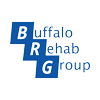Common Sources of Hip Pain
This question may seem simple, however to a Physical Therapist, this is a loaded question with a variety of potential responses.
Follow along with Physical Therapist Katie Wolfley, PT DPT, as she reviews the most common causes of hip pain.
What Comprises the Hip?
Many of us have a different definition of “the hip.”
When you think of the hip, do you think of the front of your thigh, groin, side, or buttock? Truth is, pain in any of these areas can be considered “hip pain.”
Hip pain can have varying definitions, and varying symptoms, and affect anyone regardless of age.
To better understand the hip joint, let’s take a quick anatomy lesson.
The hip joint is made of a ball and socket. The ball and socket allow for a great range of motion (think forward/backward, side to side, and rotation) while remaining stable during weight-bearing activities. The socket is surrounded by a cartilage called the labrum that adds further stability and cushioning to the joint.
There are 35 different muscles that attach to the hip and the pelvis (1). Add in the ligaments (which connect bone to bone), nerves, and connective tissue which help the hip joint move properly, and the simple question of “Why does my hip hurt?” doesn’t seem so simple anymore.
The first step in determining the source of hip pain is asking where your pain is located, and if there was any trauma or injury that occurred. The location of the pain can greatly aid in determining the potential diagnoses (2).
The diagnoses that will be discussed in this article are some of the “usual suspects” and certainly not all-inclusive.
Causes of Hip Pain
Anterior hip pain, also described as groin pain, is the most common form of true hip joint pain.
The location is similar to creating a “c” with your hand and placing it on the front of your hip.
Anterior hip pain, without trauma, can be caused by osteoarthritis, a labral tear, or impingement (2).
Osteoarthritis is the most common diagnosis in older individuals and typically has a gradual progression of symptoms, complaints of stiffness in the morning or after prolonged positioning, and limited range of motion (2).
Impingement of the hip occurs when there is not enough space between the femur (ball) and the acetabulum (hip socket). This can cause rubbing and fraying of the labrum, a “catching” or “locking” feeling, and should be considered in individuals between 15-50 years of age (3).
Posterior hip pain can be a real pain in the butt — literally.
Pain located in the buttock is not typically indicative of a hip joint problem but is likely caused by a soft tissue injury, muscular injury, or referral from another region, such as your back. The nerves that supply the hip come from the low back, and when pinched may cause pain through the buttock or numbness/tingling in the thigh.
Other common causes of posterior hip pain include sacroiliac joint dysfunction, piriformis syndrome, or a pulled muscle (4).
Lateral hip pain (outer) affects up to 10-25% of the population (2).
The bony part on the side of the hip is known as the greater trochanter. The greater trochanter is the attachment point for many muscles of the hip.
Greater trochanteric pain can be caused by bursitis, iliotibial band syndrome (ITB), or gluteal muscle tears.
Bursitis is an irritation of a fluid-filled sack that provides lubrication for all of the muscles attaching to the hip.
The iliotibial band is a thick, fibrous band that connects the muscles of the hip to the lower leg. If the muscles of the hip are too tight or weak, it can cause pain and irritation of the ITB. Symptoms typically arise from repetitive movement (walking, running, stair climbing) and can be tender while lying on the painful hip (2).
The low back can also refer pain to the outer hip, so it must be considered as a potential diagnosis (5).
Remember, not all hip pain is created equal.
Treatment options vary for each diagnosis, however, one theme remains the same: strong and flexible muscles lead to happy (less painful) joints. Understanding the source of hip pain can allow for a targeted plan to reduce or abolish your pain.
References
- Netter, Frank H., and Sharon Colacino. Atlas of Human Anatomy. 4th ed. East Hanover, NJ: Navartis, 1997. Print.
- Wilson JJ, Furukawa M. Evaluation of the Patient with Hip Pain. Am Fam Physician. 2014;89:27-34.
- Zhang C, Li L, Forster BB, et al. Femoroacetabular Impingement and Osteoarthritis of the Hip. Can Fam Physician. 2015;61:1055-1060.
- Frank RM, Slabaugh MA, Grumet RC, et al. Posterior Hip Pain in an Athletic Population: Differential Diagnosis and Treatment Options. Sports Health. 2010;2:237-246.
- Ho GWK, Howard TM. Greater Trochanteric Pain Syndrome: More than Bursitis and Iliotibial Tract Friction. Curr Sports Med Rep. 2012;11:232-238.
Struggling with hip pain?
If hip pain is slowing you down and you would like a customized plan to feel and move your best, our Physical Therapists can help.
Treatment is covered by insurance, no referral is needed to start, and with flexible appointments and our virtual care option, you can find an appointment fast that works with your schedule.
Call 716-458-1990 or use this button to schedule online:
